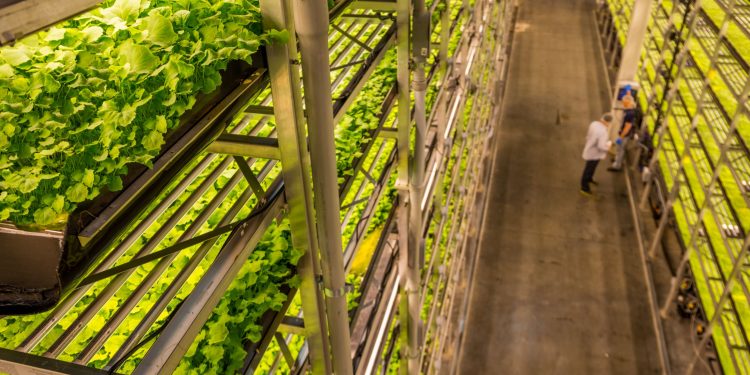Vertical farming was once touted as the future of agriculture, promising to revolutionize food production by growing crops indoors with efficient use of resources and minimal environmental impact. However, recent data shows that the industry is struggling, with most companies unable to turn a profit on lettuce despite taking in over a billion dollars in venture capital investment. Fifth Season, a promising indoor farm that projected 600% growth in sales in 2022, closed down abruptly, leaving its workers jobless. Other major players in the industry such as AppHarvest, AeroFarms, Agricool, Infarm, and IronOx are also facing financial challenges, raising doubts about the viability of the vertical farming sector.
Investors have poured $1.7 billion into indoor growers, hoping to “disrupt” the agriculture industry and find Silicon Valley-style returns in lettuce. Vertical farming was seen as a way to respond to climate change and increase food security. However, it is becoming increasingly clear that competing with the economics of outdoor farming is challenging, and investors’ expectations may have been too high.
While climate change and population growth present significant challenges for traditional agriculture, the rise and fall of vertical farming demonstrate that there is no silver bullet solution to these issues. A combination of approaches, including innovative technology and traditional farming practices, may be necessary to address the complex problems facing agriculture today.
The vertical farming bubble appears to be popping, with many companies struggling to turn a profit and investors facing significant losses. While the concept of indoor farming remains intriguing, the industry’s current challenges highlight the need for a more realistic approach to agriculture’s future. The pursuit of innovation must be balanced with practicality and an understanding of the complexities of the food system.
HOW EXPENSIVE IS IT TO GROW GREENS? LET US COUNT THE WAYS
Indoor farming has been touted as a sustainable solution to the challenges facing traditional farming, from water scarcity to crop disease. However, the reality of indoor farming, particularly for leafy greens, is that it comes with high costs. According to recent data, farms in warehouses or vertical farms are expensive to build and run. Lights alone are a significant expense, with a small 10,000-square-foot farm potentially having a lighting bill of over $100,000 per year. Running air conditioners and other equipment also adds to energy costs, and even with renewable energy sources like solar panels, it may not be enough to cover the electricity needed.
Many startups in the indoor farming space have also built their own technology to operate the farms, which can lead to ballooning expenses. Despite this, traditional greenhouses already grow a large percentage of the tomatoes eaten in the United States and the Netherlands grows nearly a million tons of tomatoes a year, making it a major food exporter. While indoor farming may have its advantages, it is important to weigh the costs and benefits before investing in this type of agriculture.
While indoor farming has its advantages, the costs associated with it, particularly for leafy greens, are significant. From building and running vertical farms to paying high lighting and energy bills, these expenses may outweigh the benefits of this type of farming. It is essential to weigh the costs and benefits of indoor farming carefully, as traditional greenhouses and outdoor farming may still be the most sustainable and cost-effective solution in some cases.
According to a recent article in Fast Company, many high-tech greenhouse companies are still heavily reliant on venture capital funding, and some have struggled to achieve breakeven or profitability. For example, AppHarvest, which has raised over $640 million, reported net losses of $83 million through the first nine months of 2022. Even if an indoor farm can eventually become profitable, it may take several years to achieve that goal. This can be a challenge for startups that need to continue raising capital to fund operations, particularly as investors have become more cautious in the current market.












